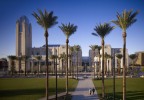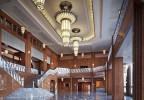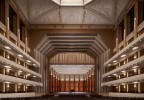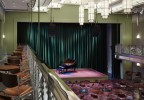The Smith Center for the Performing Arts: Deco in Vegas
DMSAS designs a new performing arts center that will outlast the $20 in your pocket.
Las Vegas is known for its over-the-top re-creations of period architecture and, in some cases, of entire cities. Where else can you view interpretations of Caesar’s Palace, an ancient Egyptian pyramid, and modern-day New York City? The newest addition to Vegas’s collection of notable architecture is an Art Deco behemoth inspired by the nearby Hoover Dam.
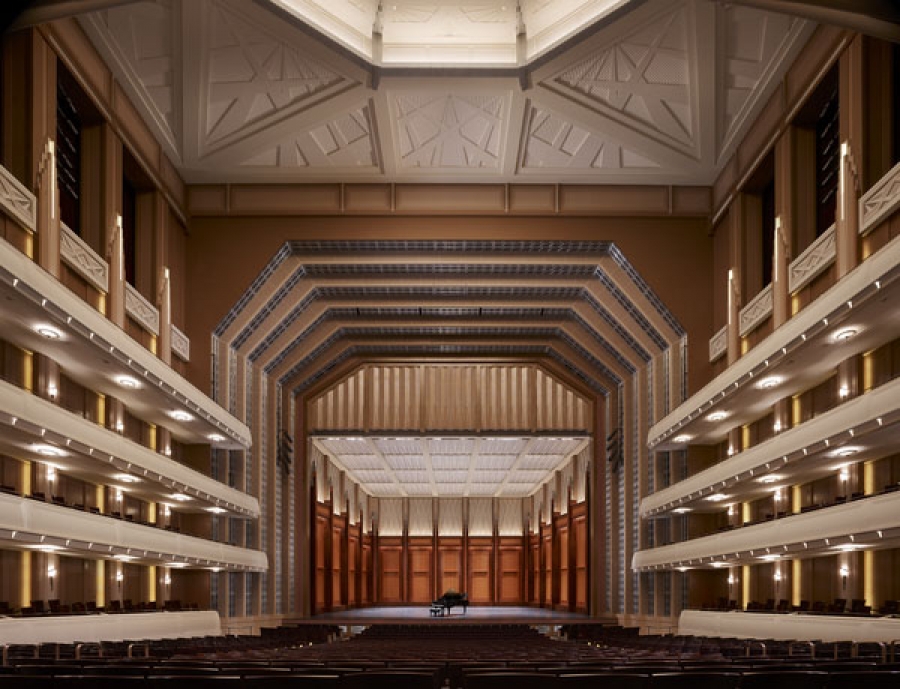 Image courtesy of Steve Hall © HedrichBlessing
Image courtesy of Steve Hall © HedrichBlessing
Washington, D.C.-based firm David M. Schwarz Architects (DMSAS) has designed The Smith Center for the Performing Arts, a new 385,000 square foot facility that looks historic from the outside but conceals the latest in theater technology. This building is not ironic in the typical Vegas fashion, nor is it a tourist magnet, but rather an amenity for the permanent citizens of the city.
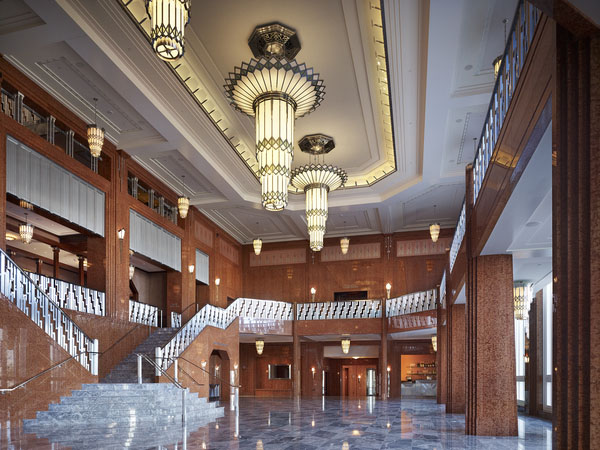
The Smith Center for the Performing Arts is the anchor for a 61-acre development called Symphony Park in downtown Las Vegas. DMSAS designed the Smith Center as a weighty and massive structure anchored by a 170' tall carillon tower with 47 bronze bells. In line with the project’s theme of “timelessness,” durable materials abound throughout, including 2,458 tons of Indiana limestone, although intricate ornamentation helps to offset the bulk. The Smith Center features gleaming terrazzo floors and elegant, 19'-long Deco-style chandeliers that grace the lobbies. Wood panels and aluminum latticework round out the rich but streamlined material palette. Several sculptures were commissioned for the project, including a bronze statue of Fred W. and Mary Smith by William Behrendsand a piece by Benjamin Victor that was inspired by the Winged Figures of the Republic at the Hoover Dam.
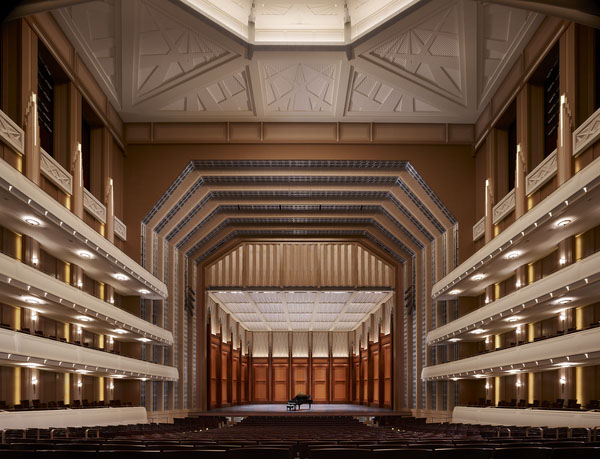
The new venue offers three performance spaces of varying sizes and function. The grand, 2,050-seat Reynolds Hall is the focal point and can accommodate an array of productions, from orchestras to operas to Broadway shows. Its innovative acoustic design features anterooms with doors that function as dampers, opening and closing as needed to absorb sound and prevent echoes. For more intimate performances, the Boman Pavilion offers the 258-seat Cabaret Jazz and the 250-seat Troesh Studio Theater, as well as a children’s museum, classrooms, offices, and retail space. Supplementing the Smith Center’s program are 1.7 acres of outdoor performance space.
DMSAS, who have completed several major performing arts centers throughout the country, collaborated with executive architect HKS Architects, Inc., acoustical designer Akusticks, and theater planner Fisher Dachs Associates to design the project. The Smith Center is expected to achieve the distinction of being the first major multi-purpose performance center in the United States to earn LEED Silver certification.
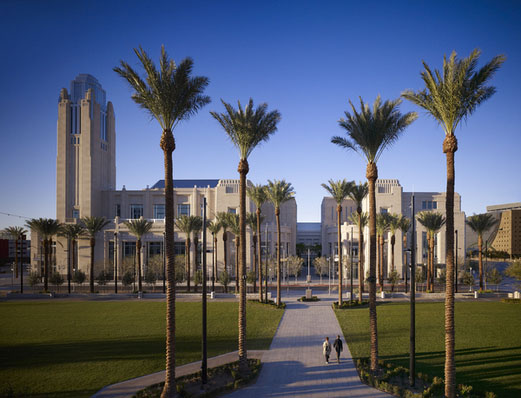

Murrye Bernard
Murrye is a freelance writer based in New York City. She holds a Bachelor's degree in Architecture from the University of Arkansas and is a LEED-accredited professional. Her work has been published in Architectural Record, Eco-Structure, and Architectural Lighting, among others. She also serves as a contributing editor for the American Institute of Architects' New York Chapter publication, eOculus.
Website: www.murrye.com
